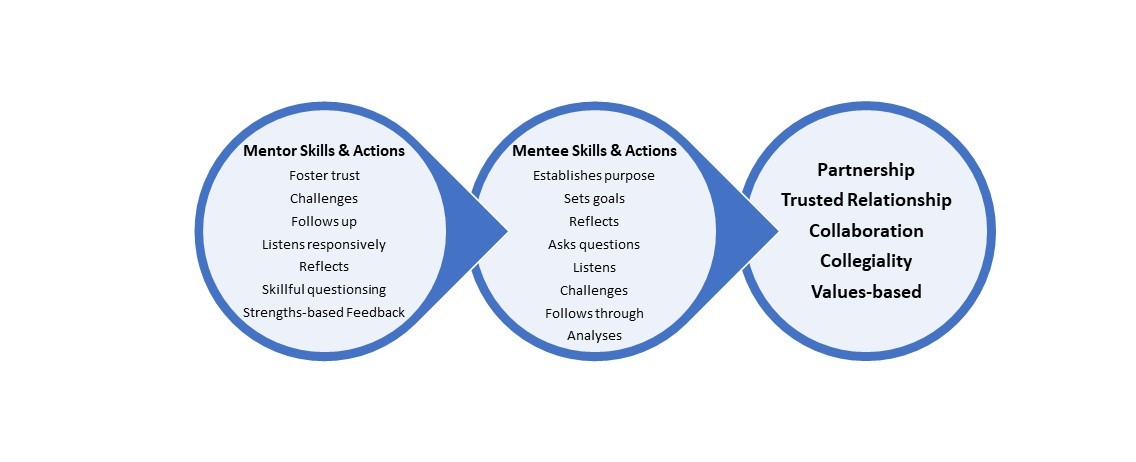I just looked up the word mentoring. The thesaurus couldn’t cope with this – I had to use ‘mentor’ to receive a list of synonyms. I Googled “Another word for mentoring” and still got ‘mentor’ as well as ‘mentorship’. Which to my mind indicates that although mentoring is a commonly used word in organisations, the concept, meaning and understanding of this term is still a little blurry.
Following on from my last article about “Who mentors the mentor?” here is another piece from my upcoming book Mentoring Programme Design: Getting It Right The First Time. This is from Chapter One which walks through the fundamentals of your programme design, including:
- Defining mentoring
- Determining the purpose of mentoring
- Choosing the right mentoring model
- The value and benefits for the mentor, the mentee, and the organisation
- A typical programme cycle
- How to determine the ROI (return on investment) of your programme.
Here we ask how you can envisage mentoring, i.e., what do you see that tells you mentoring is happening in your organisation? I think this is an important activity to do, as otherwise people will continue to be unsure what mentoring is and how they can benefit from it, which diminishes the powerful influence it can have – as I alluded to in the introduction to this article.
Excerpt from Chapter One (page 6)
What does mentoring look like in action? Let’s assume you have a programme in place and people are engaging in mentoring relationships, meeting regularly, and gaining immense value from this. What will you see? What will they be experiencing? Deciding what mentoring will look like in your organisation is a useful technique that will help you establish a programme that achieves this vision.
Here are a few ideas. Decide which ones are relevant for you in the context of your vision and goals for the programme:
- The mentor and mentee achieve real value-for-time in their meetings
- Feedback is a mutually-agreed, strengths-based, honest process
- The mentor’s genuine interest in supporting the mentee is demonstrated by following up on agreed actions following a meeting, being on time for meetings, keeping in contact with the mentee outside the formal meetings
- Questions asked by the mentor help the mentee analyse, evaluate and make decisions about how they can make changes or accept a situation by identifying strategies for managing this reality
- Difficult conversations are effectively managed by both the mentor and the mentee, with a way forward identified and agreed to
- The mentee is open to the mentor’s viewpoint and considers it in relation to their own value base
- The mentoring conversation gives clarity over issues and presents new actions and directions for the mentee (and often for the mentor too)
- People are planning for and progressing along their career pathways
- Communication between people and within and across the organisation is intentional, meaningful, and values-based
- There is a tangible culture of collegiality in the organisation
Another way to describe this concept is by visualising it. Here is my representation of what mentoring looks like:
So what does mentoring look like in your organisation? Or what do you want it to look like? And how will you achieve this?
Designing a mentoring programme and getting it right the first time means paying attention to every component inherent in good programme design and therefore in your mentoring programme model. Knowing what mentoring means, establishing the purpose for providing mentoring support, and having a clear idea of the mentoring outcomes are core considerations. A good starting point that encapsulates all of these points is deciding what mentoring will look like in your organisation.